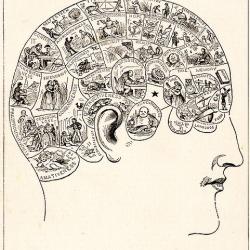Source Institutions
Source Institutions
Add to list Go to activity
Activity link broken? See if it's at the internet archive

In this activity, learners will explore how the human brain interprets environmental stimuli. Learners use two point discrimination on the skin to determine the relative number of nerve endings located in the skin. By calculating the reciprocal of these measurements, learners will have the appropriate data for predicting the relative size and drawing the homunculus found on the cerebral cortex. Comparisons can be made among the homunculi of other mammals. This lesson plan includes background information, focus questions, and guide for learners.
- 10 to 30 minutes
- 45 to 60 minutes
- $1 - $5 per group of students
- Ages 14 - 18
- Activity, Experiment/Lab Activity, Lesson/Lesson Plan
- English
Quick Guide
Materials List (per group of students)
- Any items with which to produce two fine points of touch (tooth picks, large paper clip bent into a horseshoe shape, straight pins, student compass, calipers)
- Graph paper
- Metric rulers
- Alcohol or other disinfectant
Subjects
-
Life Sciences
-
Diversity of Life
- Animals
-
Evolution
- History of Life
-
Human Body
- The Brain and Nervous System
- Muscles and Skin
-
Human Senses and Perception
- Touch
-
Diversity of Life
-
Mathematics
- Algebra
-
Data Analysis and Probability
- Data Analysis
- Data Collection
-
Measurement
- Size and Scale
-
The Nature of Science
-
The Scientific Process
- Conducting Investigations
- Gathering Data
- Formulating Explanations
- Communicating Results
-
The Scientific Process
Informal Categories
- Animals
Audience
To use this activity, learners need to:
- see
- read
- touch
Learning styles supported:
- Involves teamwork and communication skills
- Involves hands-on or lab activities
Other
This resource is part of:
Access Rights:
- Free access
By:
- Walker, Peggy
Rights:
- All rights reserved, Access Excellence @ the National Health Museum, 2009
